Native-Plant Restoration Project - Department of Biological Sciences
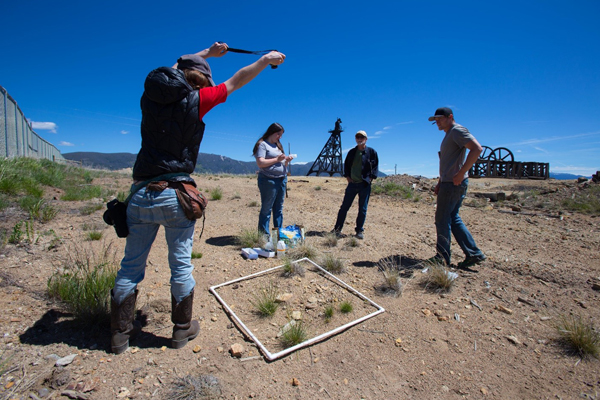
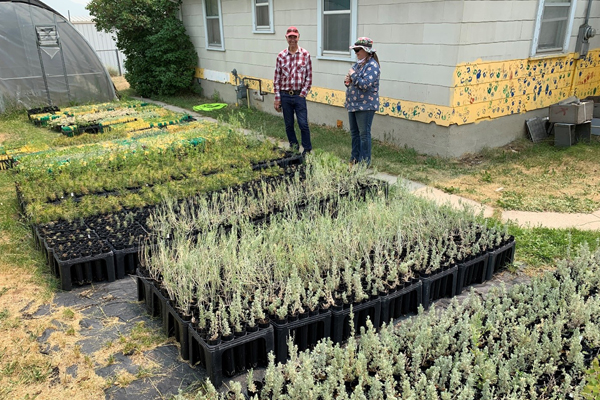

Who We Are
The goal of this project is to restore diverse, self-sustaining native plant communities across the reclaimed areas of Butte Hill, helping to reduce erosion and protect the Clark Fork watershed from the historic mining impact. In addition to revegetation efforts, the program emphasizes local collection of native seeds, propagation of locally adapted species, and the continuous refinement of planting and restoration techniques. Our program also designs native seed mixes specifically tailored for the unique conditions of the Butte Hill.
Since its launch in 2013, the project has restored 80 sites, planting over 70,000 native plants representing 138 different species. Over the past decade, more than 100 undergraduate and graduate students—as well as countless volunteers—have contributed to the project, gaining hands-on experience while helping to transform the Butte Hill into a self-sustaining native ecosystem.
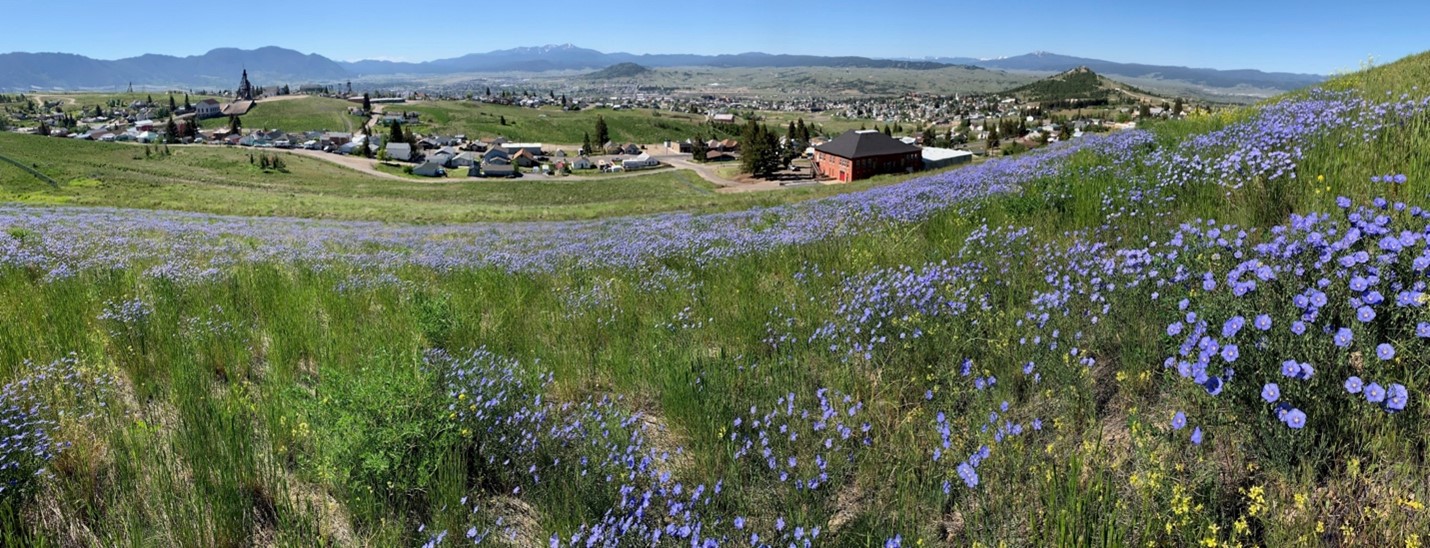
A Butte Hill Cap Diversified by the Native Plant Restoration Project
Background of the Butte Hill Caps
Over a century of hard rock mining left the Butte Hill covered with countless piles of toxic waste rock and tailings. The extent of environmental damage led to the designation of the Butte area as part of the Silver Bow Creek Superfund site in 1987 (EPA, 2025). In the early 1990s, to protect public health and prevent the spread of heavy metals, hundreds of acres of contaminated land were capped with a thin layer of lime followed by approximately 18 inches of clean soil. These caps were then seeded with reclamation mixes, typically composed of non-native species such as crested wheatgrass, sheep fescue, and alfalfa. While these introduced plant communities have helped control erosion over the past three decades, they have largely failed to support full ecosystem functions. Meanwhile, native plant species have not successfully established on these reclaimed sites.
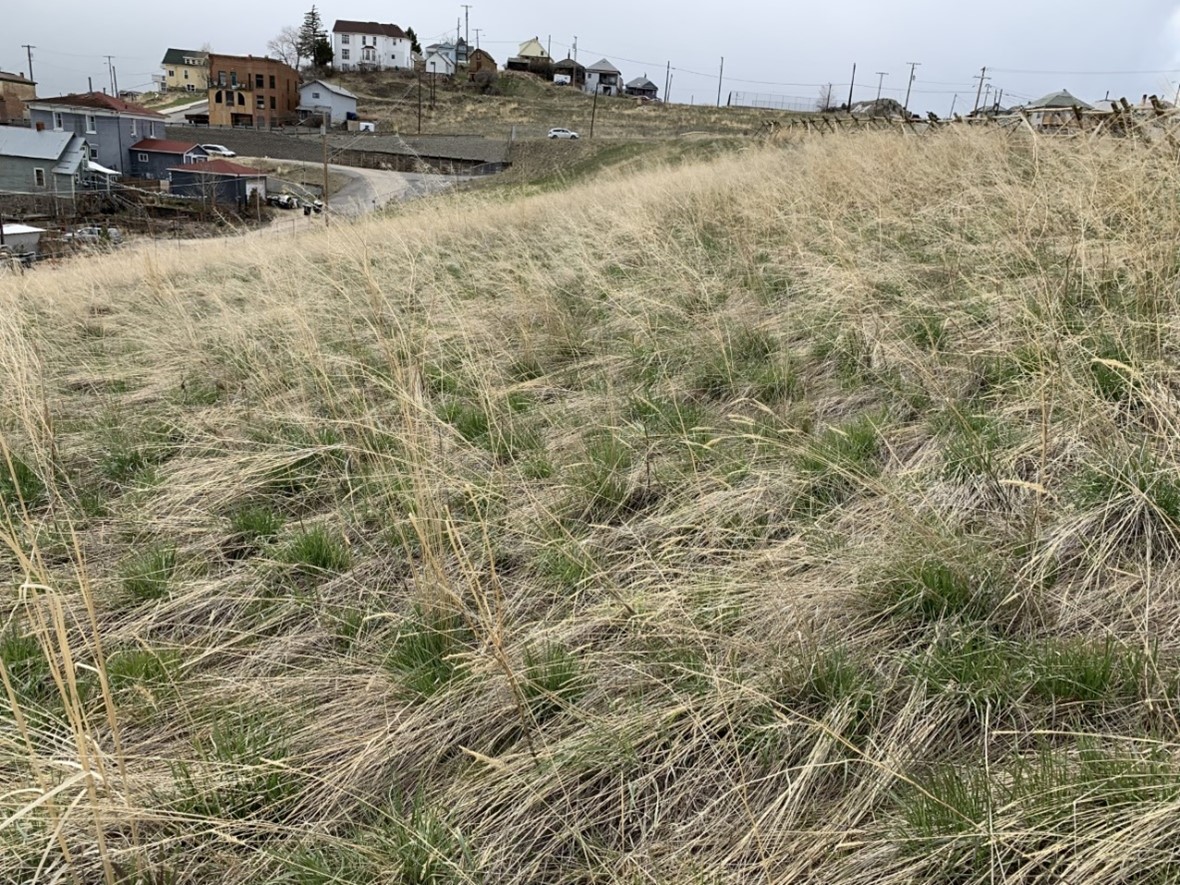
A traditional mine cap on the Butte Hill, dominated primarily by Eurasian grasses
History of the Program
In 2009, the Montana State Natural Resource Damage Program funded Montana Tech to demonstrate innovative techniques for establishing native plant dispersal islands. At that time, Kriss Douglass was appointed as the project's principal investigator (PI). This initial effort laid the groundwork for what became the current Native Plant Restoration Project, officially launched on January 3, 2013, when Governor Brian Schweitzer approved the restoration plan for Butte Area One. The plan allocated $1 million in natural resource damage settlement funds to Montana Tech over an eight-year period. In 2015, Dr. Robert Pal succeeded Kriss Douglass as PI of the project. The program was renewed again in 2021, continuing its mission to restore native plant communities on the Butte Hill.
- Coordinate with stakeholders to select priority planting and optimize project impact
- Montana Tech works in conjunction with the City-County of Butte-Silver Bow and the Butte Natural Resource Damage Restoration Council to identify planting sites that will be the most helped by planting efforts.
- Propagate native plants for use in ecological restoration in Butte Area One and the associated watershed.
- The Native-Plant Restoration Project supports the revegetation and diversification of over 600 acres of remediated land, including 178 sites within the Butte Reclamation Evaluation System (BRES). To date, we have enhanced plant diversity at more than 80 of these sites and installed over 70,000 native plants.
-
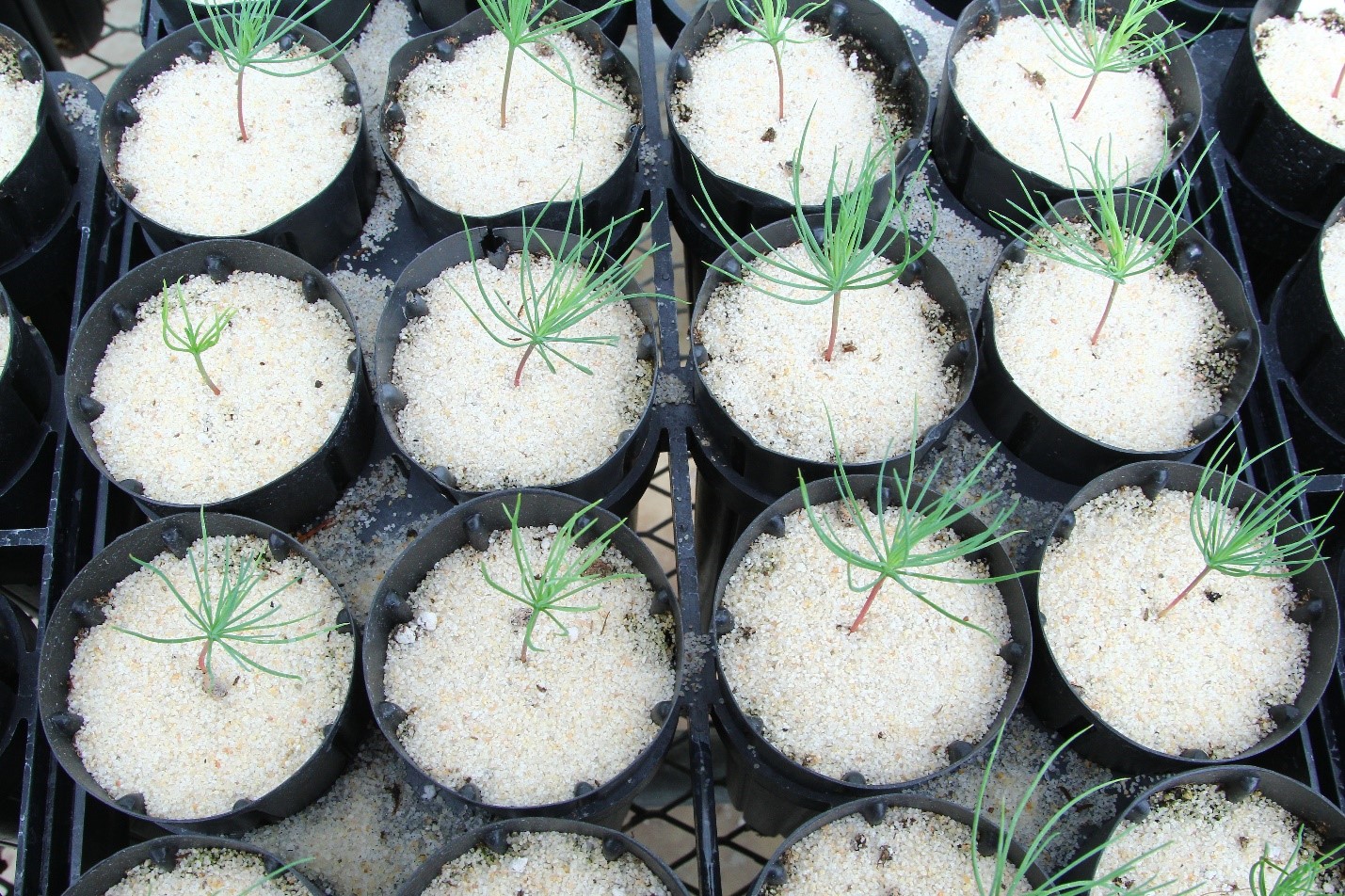
Lodgepole pine seedlings growing at the Montana Tech Greenhouse.
- Monitoring restoration success and applying adaptive management
- A core mission of the program is to raise awareness—locally and beyond—about the importance of ecological restoration and the value of self-sustaining native plant communities. We share this message through public presentations, university seminars, outreach materials, and guided field trips to restoration sites. Most importantly, we foster hands-on engagement—our annual community planting events are a cornerstone of the program, cultivating long-term stewardship and a shared sense of responsibility for our recovering ecosystems.
-
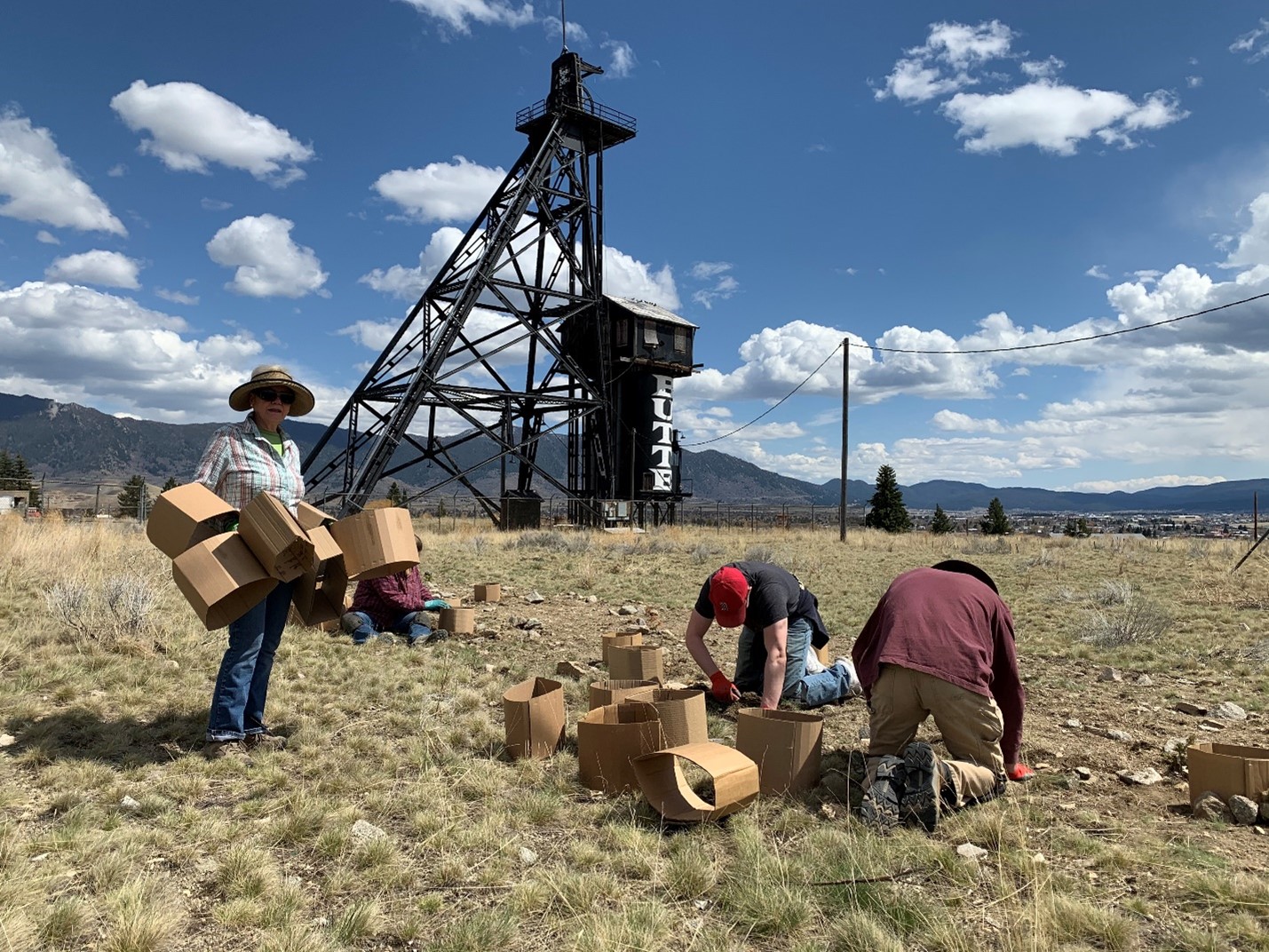
Restoration packs installed at the Travona Mine Yard to enhance native plant survival.
- Promote stewardship
- A core mission of the program is to raise awareness—locally and beyond—about the importance of ecological restoration and the value of self-sustaining native plant communities. We share this message through public presentations, university seminars, outreach materials, and guided field trips to restoration sites. Most importantly, we foster hands-on engagement—our annual community planting events are a cornerstone of the program, cultivating long-term stewardship and a shared sense of responsibility for our recovering ecosystems.
-
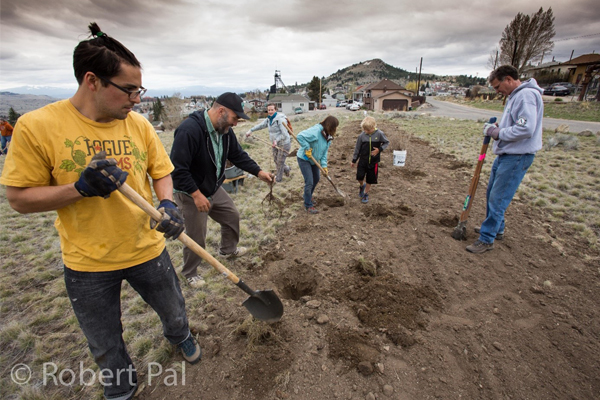
Community planting event at the West Gagnon Dump Reclamation Site.
The Native Plant Restoration Project operates two greenhouses on the Montana Tech campus, serving as the hub for seed and plant management. These facilities support the full cycle of native plant propagation—drying, cleaning, storing, and planting thousands of seeds each year. Seedlings are nurtured in the greenhouses until they are ready to be hardened in outdoor sheds and eventually transplanted to restoration sites across the Butte Hill. The greenhouses also serve as a vital space for research, hosting native plant restoration projects led by both undergraduate and graduate students.
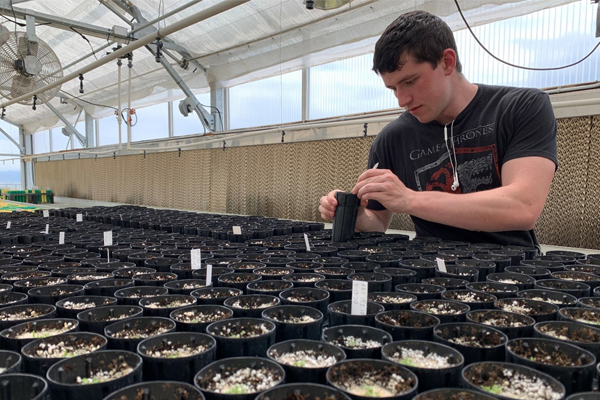
A Montana Tech student propagates pine seedlings in the campus greenhouse. Students in the Restoration Certificate and Restoration MS programs gain valuable hands-on experience by working with the Native Plant Restoration Project throughout the semester.
In addition to greenhouse propagation, the program locally collects seeds from over 120 native plant species and maintains a growing seed orchard on campus. This living collection currently includes 60 species and is continually expanding. By cultivating these plants on-site, the program reduces reliance on wild populations and ensures a sustainable seed supply—even during periods of drought.
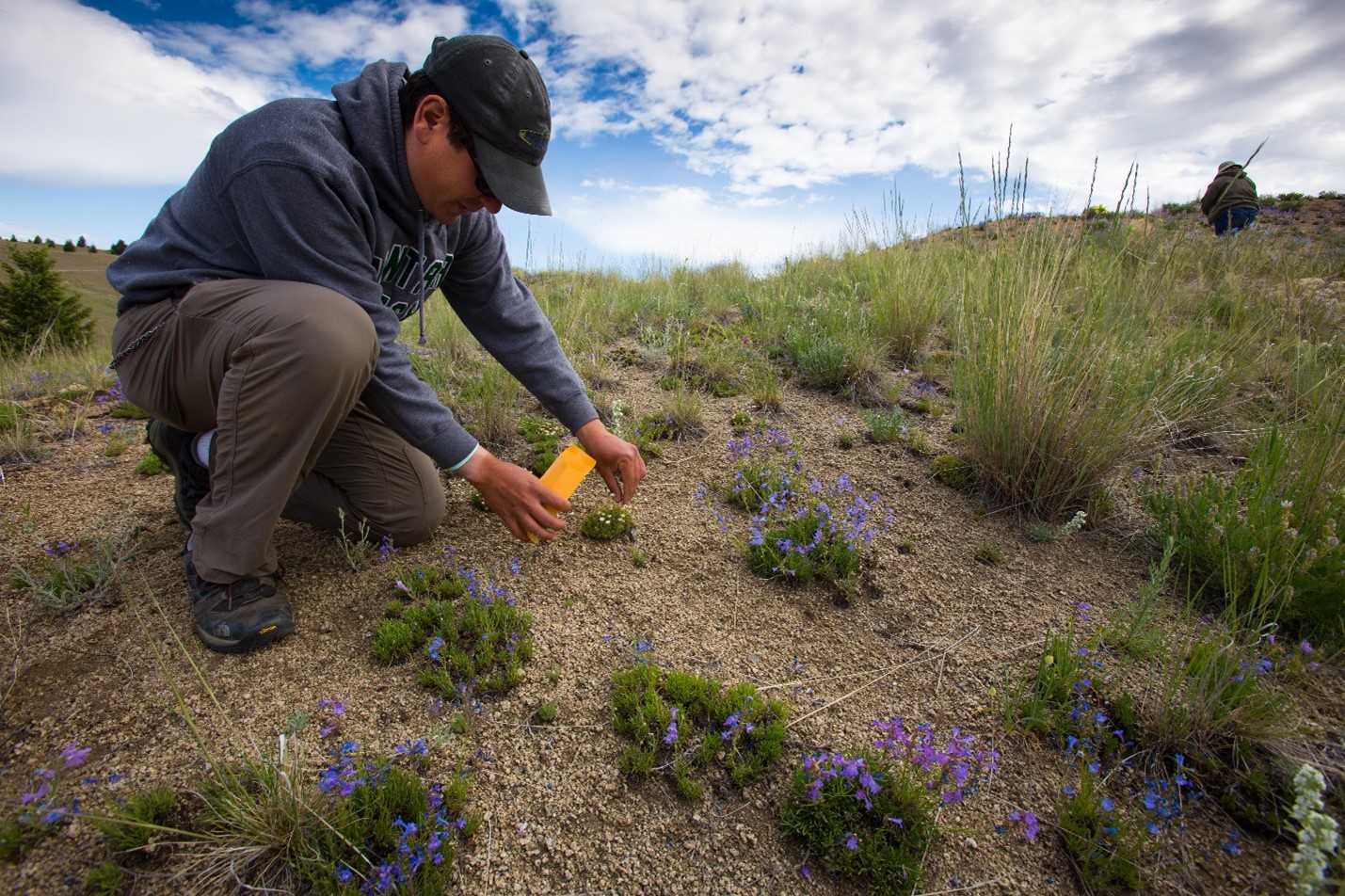
Native seed collection at the West Side Soils Operable Unit.
Commonly Planted Species
While over 120 species of native plants are planted, there are 26 species that make up the majority of plantings and three grass species that are heavily seeded with. These species tend to propagate easily, have a high rate of survival on the Butte hill, and create ecological and structural diversity in the plant communities. Beyond these successful pioneering species are pollinator species that promote insect diversity and nitrogen fixing species to improve soil conditions.
Trees
Lodgepole Pine (Pinus contorta), Limber Pine (Pinus flexilis) and Douglas Fir (Pseudotsuga menziesii)
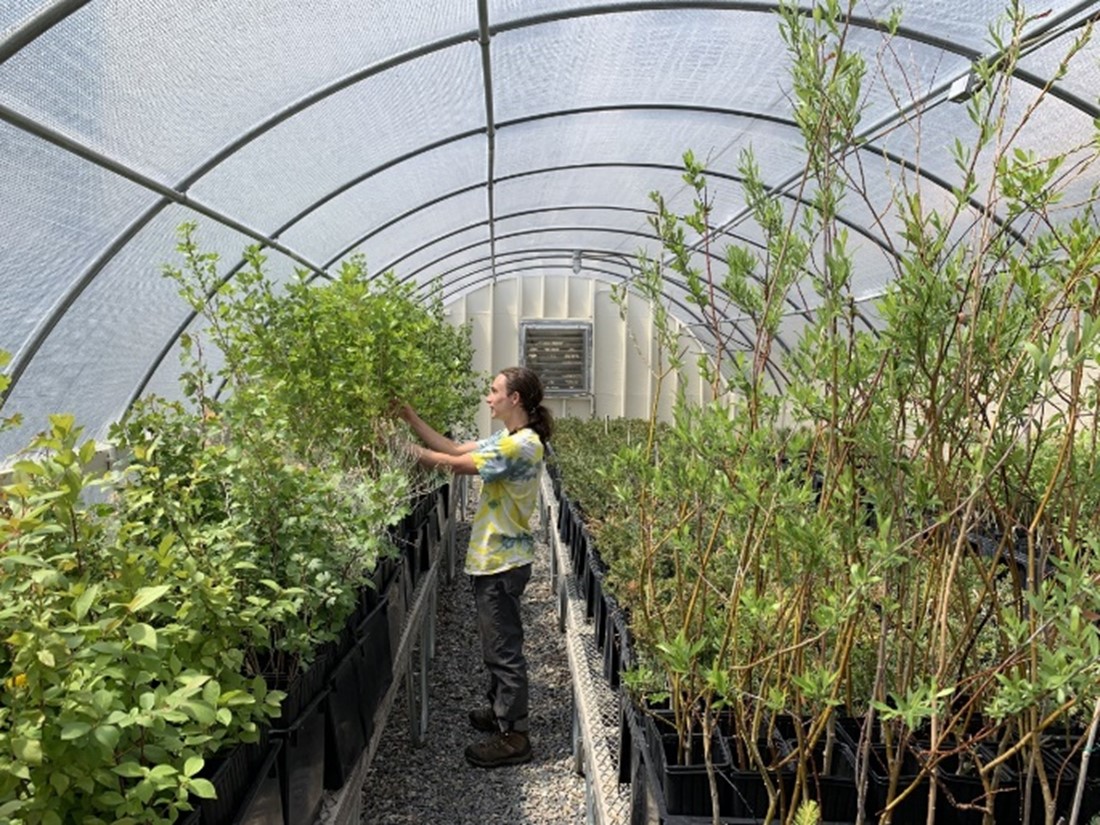
Trees typically spend several years maturing at our growing facilities before being outplanted to restoration sites.
Shrubs
Big Sagebrush (Artemisia tridentata), Curlleaf Mountain Mahogany (Cercocarpus ledifolius), Green Rabbitbrush (Chrysothamnus viscidiflorus), Rubber Rabbitbrush (Ericameria nauseosa), Creeping Juniper (Juniperus horizontalis), and Woods’ Rose (Rosa woodsii)
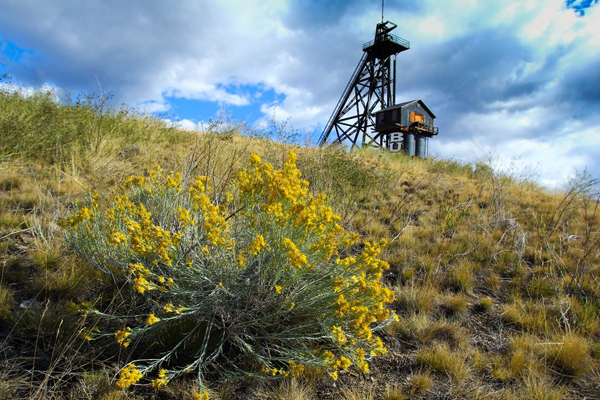
Rubber rabbitbrush thriving at the Travona Reclamation Site—planted as part of our Native Plant Restoration Program.
Forbs
Common Yarrow (Achillea millefolium), Littleleaf Pussytoes (Antennaria micophylla), Fringed Sage (Artemisia frigida), Prairie Sage (Artemisia ludovicana), Prairie Milkvetch (Astragalus adsurgens), Cutleaf Daisy (Erigeron compositus), Sulfur Flowered Buckwheat (Eriogonum umbellatum), Blanketflower (Gaillaridia aristata), Curlycup Gumweed (Grindelia squarrosa), Hairy Goldenaster (Heterotheca villosa), Sillky Lupine (Lupinus sericeus), Scorpionweed (Phacelia hastata). Slender Cinquefoil (Potentilla gracilis), Missouri Goldenrod (Solidago missouriensis), and Western Mountain Aster (Symphyotrichum spathulatum).

Rocky Mountain dwarf-primrose, an early bloomer, thrives in challenging conditions such as low pH and heavy metal contamination—a species perfectly adapted to harsh environments.
Seeded Grasses
Prairie Junegrass (Koeleria cristata), Idaho Fescue (Festuca idahoensis), and Bluebunch Wheatgrass (Pseudoroegneria spicata).
One of the primary research goals of this program has been to establish best practices to more efficiently and reliably collect, clean, germinate native plant seeds, and to improve restoration techniques on the caps. Dr. Pal and Krystal Weilage (the greenhouse manager) with the involvement of undergraduate students, graduate students, and volunteers have worked on establishing a number of procedures and best practices from all plant species used by the program. Through experimentation with different native seed mixes and soil amendments these procedures are improving every year.
Graduate student research is also an important aspect of the program with greenhouse experiments looking at how soil pH, heavy metals contamination, or invasive plants species interact with our native species being conducted in the greenhouse.
Outside of greenhouse, field projects look at designing and innovating restoration techniques such as scrapes, rough and loose, or the utilization of restoration packs to promote plant survival and natural propagation. Other projects include studying natural succession, the vegetative characteristics of recovery, and understanding the limiting factors on the planting sites.
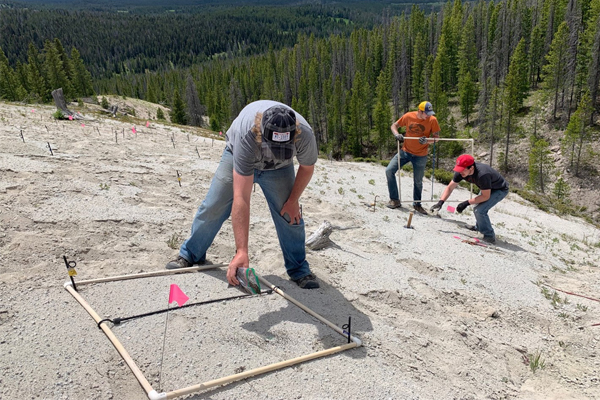
Field trial established with the help of Montana Tech students to evaluate the performance of native seed mixes under real-world conditions.
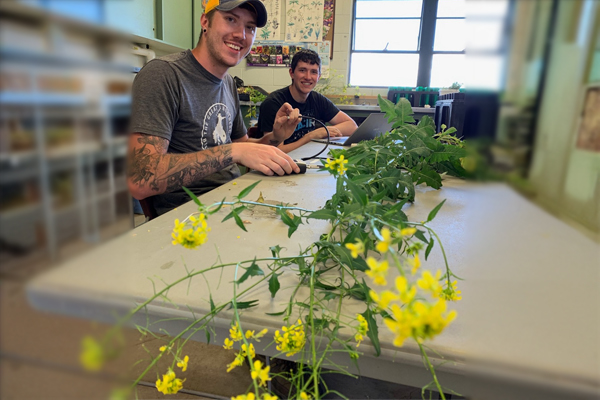
Montana Tech students harvesting a greenhouse-based experiment as part of a hands-on restoration project.
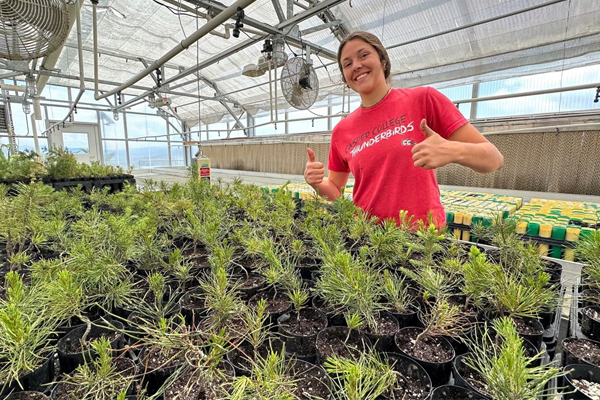
Lodgepole pine seedlings in a mycorrhizal inoculation trial, managed by a Montana Tech student in a controlled greenhouse setting.
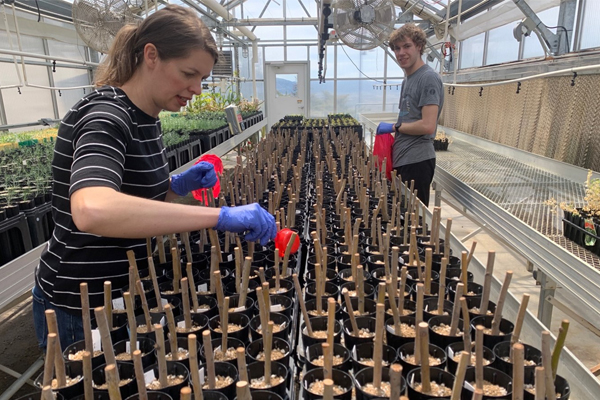
Montana Tech student testing locally collected willow cuttings with various microbial inocula in a controlled greenhouse environment.
There are many ways to get involved with the Montana Tech Native Plant Restoration Project—from joining community planting days to volunteering in our greenhouses or assisting with seed collection efforts.
Montana Tech students can enroll in Restoration Practicum (NRSM 495W), a hands-on course where they follow the entire native plant restoration process. Throughout the semester, students gain experience in seed collection, seed cleaning, germination testing, propagation, and planting—while building the skills needed to grow native plants on their own.
Students may also participate in the program through work-study opportunities.
Interested?
Contact Krystal Weilage at kweilage@mtech.edu.
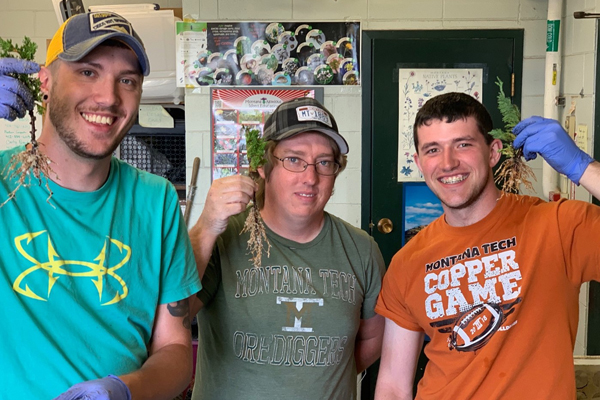
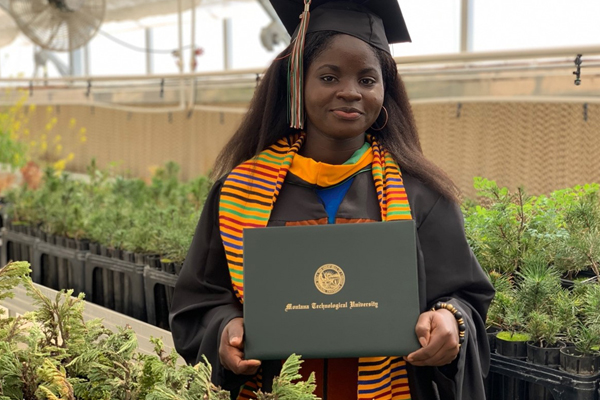

References
Environmental Protection Agency. (February 25, 2025). Silver Bow Creek – Butta Area Superfund: Background.
Montana Tech, (June 27, 2013). Improving Native Plants on the Butte Hill. News.
https://www.mtech.edu/news/2013/06/improving-native-plants-on-the-butte-hill.html
This page was created with the help of undergraduate student Caleb Lashway as part of his Restoration Practicum, fulfilling a requirement for the Restoration Certificate.
We can help answer your questions.
Professor/Director of Restoration
CBB 218
406-496-4725